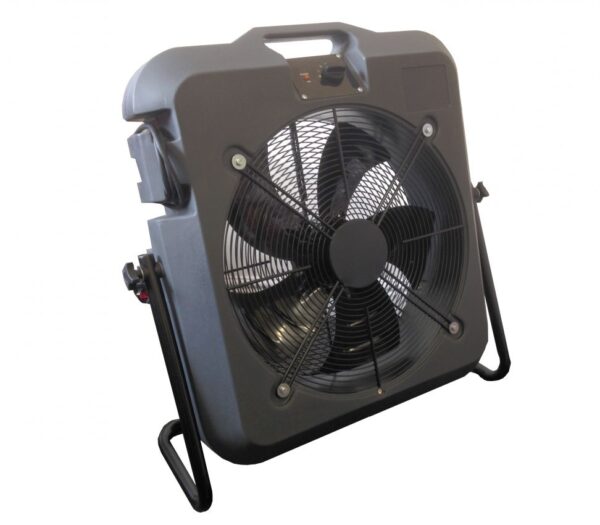Heat Stress in Construction
Instances of heat stress in construction can become commonplace during the summer months. Working in a hot environment is not only uncomfortable, it can also lead to a range of heat-related conditions. Some of which, if left untreated, can result in serious illness or death.
For example, last summer it was estimated that there were 2,556 excess deaths after the series of heatwaves that took place during June, July, and August.
The physical nature of construction work alongside exposure to hot environments, both indoors and outdoors, can make you and your team vulnerable to heat related illnesses.
We look at the signs of heat stress and at how you can reduce the risk for you and your team.
What is Heat Stress?
Heat stress can occur when your body can’t adequately control its internal temperature. This makes it unable to rid itself of excess heat. Your heart rate increases as your internal temperature rises. If your body isn’t cooled down, then heat stress related illnesses can occur.
Heat stress can lead to conditions ranging from feeling lethargic, through to heat stroke which can be life threatening.
Heat stress symptoms include:
- Lack of concentration
- Confusion
- Headaches
- Dehydration
- Convulsions or seizures
- Heat rash
- Light-headedness, and dizziness
- Fainting
- Nausea and vomiting
- Pale skin
Knowing the early warning signs of heatstroke will help protect both yourself and your team. If you spot that someone is showing symptoms, then you need to get them help and cool them down as a matter of urgency.
Whilst you are seeking medical advice:
- Move them into the shade and away from the source of heat
- Loosen their clothing and remove any restrictive PPE that may be heating their body up
- Cool down the skin by mopping it with cool water
- Give them water. Or, if you have one available, an isotonic sports drinks will help replace lost salts.
You may find this checklist from the Red Cross useful:
First aid for someone with heat exhaustion | British Red Cross
Heat Stress in Construction – risk assessment

Construction work is often very physical, and this can impact the amount of heat a body generates.
If there is a possibility of heat stress occurring within the environment you or your team are working, then a Risk Assessment will be needed. Factoring in:
- The working climate. Consideration of the environment that your workers are exposed to. Such as heat sources, air temperature, movement of air, and humidity
- The nature of the work being undertaken. The more physical the work then the more heat the body will generate.
- Individual workers. Age, build and medical conditions can impact how that person’s body can cope with heat exposure.
- PPE clothing or equipment. These can have an impact on how easy it is for the body to regulate temperature. For example, certain types of protective clothing may mean sweat evaporation is restricted.
How can you reduce the risk for you and your team?
Reducing the risk of heat stress in construction for you and your team is essential. Being prepared and recognising potential risks will help you mitigate the dangers. For example:
- Make sure you and your team are informed of the dangers of heat stress and know how to spot potential signs.
- Cool down the air temperature using air conditioners and fans. Provide shaded areas away from the sun.
- Ensure you and your team are taking regular, scheduled breaks – particularly if you are working in the sun. Take your break away from the source of heat – sheltering where it is cooler and shaded.
- Keep everyone hydrated. Make sure that drinks are being consumed regularly and everyone has easy access to a water source.
- Be aware individuals who may have a condition that could make them more prone to heat related illnesses.
- Try and schedule the heavier, more physical work to cooler times of the day. Ideally early morning and evening.
Products related to managing heat on-site
There are products available you can bring on-site that can help you manage heat . Such as:
Air Conditioning Units
Portable air conditioning units are easy to move around on site and will help regulate the working environment.

Portable Air Conditioning Unit
Air Moving Fans
Fans can help with the air movement by providing high volumes of airflow to help cool down areas.

Air Moving Fan – Tempest T5000
Shelters.
Not all construction sites offer a shady retreat for breaks from the sun. Temporary shelters can provide shade for workers to be able to take regular breaks away from direct sunlight and give their body an opportunity to cool down.
Heat stress in construction can be managed by ensuring that the risks are recognized, assessed and steps are taken to mitigate the exposure to heat sources.
Useful Resources
The Health and Safety Executive provides a helpful guide to heat stress in the workplace that you can download from their website:
Health and Safety Executive: Heat Stress in the Workplace: A Brief Guide
